EVENTイベント開催情報
モデルコース|若き芸能者と出会う旅 1泊2日2022.09.10(土)-11(日)
- 2022
- モデルコース
2日目
2022.09.11(日)
「洋野町、洋と野に舞う若い芸能者の演舞に感動‼︎」
| 時 間 | スケジュール | 備 考 |
|---|---|---|
| 08:00 | 盛岡駅発ー八戸駅着(09:21) | 東北新幹線はやぶさ1号 |
| 09:29 | 八戸駅発ー種市駅着(10:24) | のりかえ|JR八戸線久慈方面 |
| 11:00 | 見学|ひろの水産会館ウニーク | 徒歩で移動 |
| 11:30 | 昼食|はまなす亭 | 徒歩で移動 |
| 12:30 | 公演|三陸国際芸術祭2022 彩 「三陸未来芸能彩」(13:00〜15:45) | (受付開始12:00開場12:30) |
| 17:44 | 種市駅発ー八戸駅着(18:44) | JR八戸線 八戸方面 |
| 19:06 又は 20:12 | 八戸駅発ー東京駅着(22:04又は23:04) | 東北新幹線はやぶさ46号 |
盛岡駅

東北新幹線はやぶさ1号
08:50発
09:21着
所要時間31分
八戸駅

JR八戸線 久慈方面
09:29発
10:24着
所要時間55分
種市駅

徒歩 10分
10:40~ひろの水産会館ウニーク
「洋野町復興のシンボルUNIQUE」
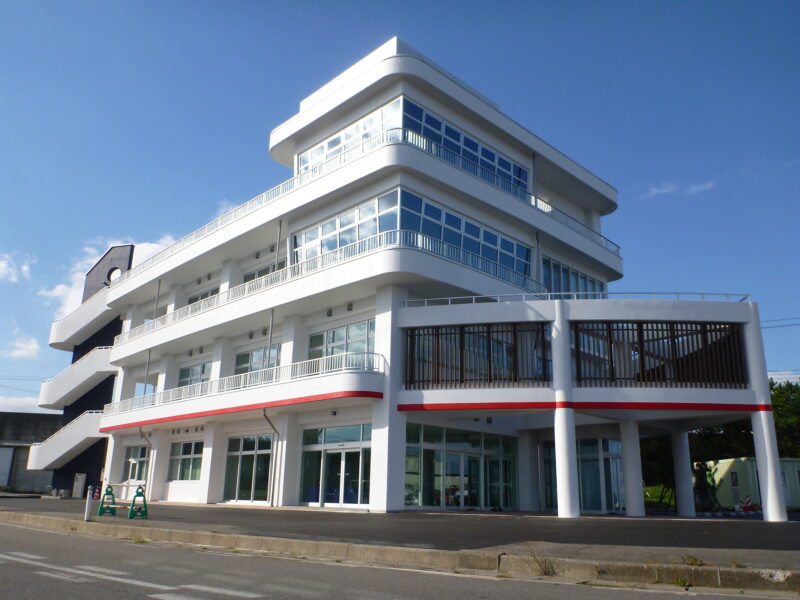
▲ 白い客船をモチーフにした外観
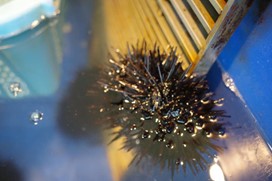
▲ 洋野町特産ウニ
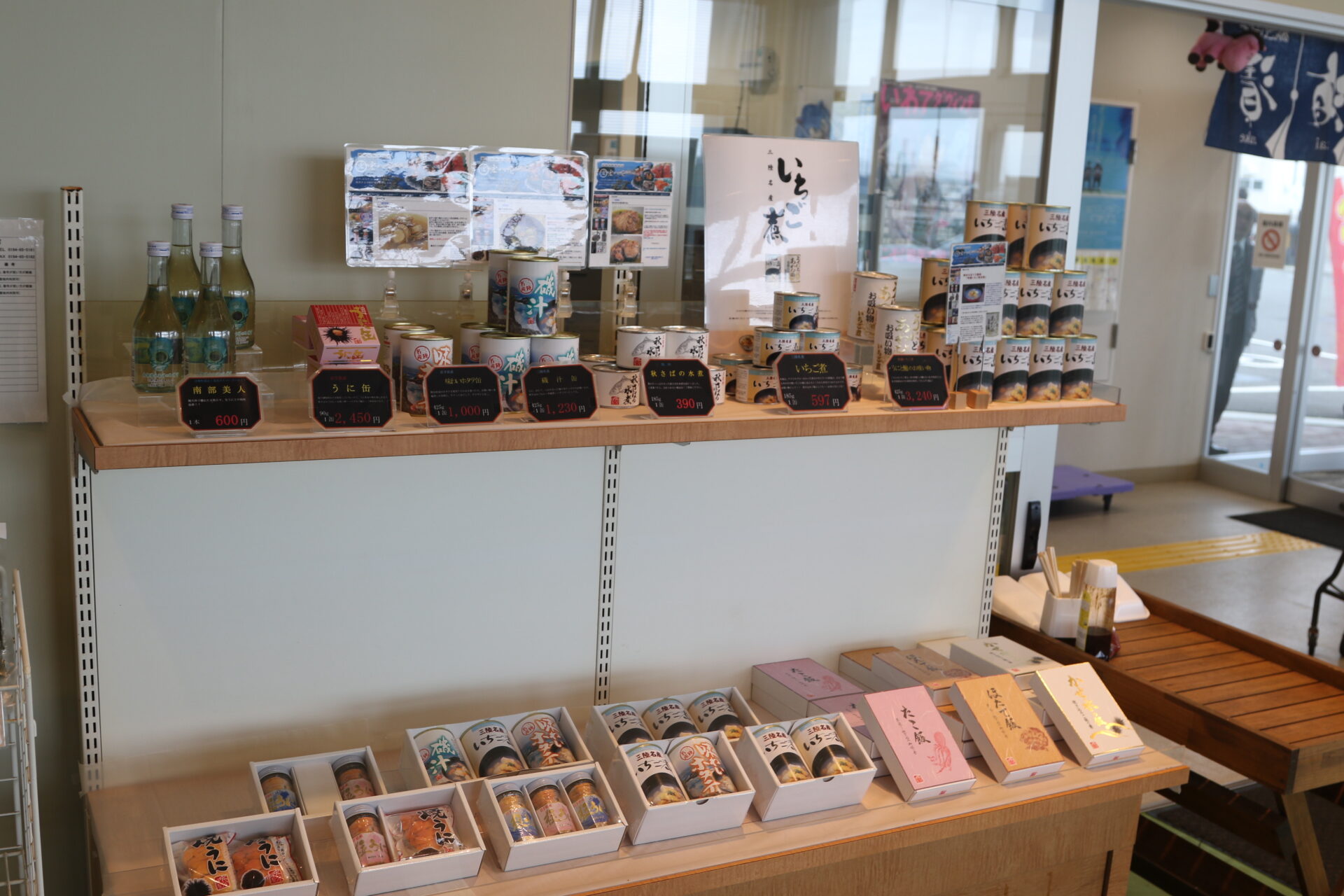
▲ 特産品などの物産展示コーナー
~展望デッキから広がる景色は最高‼︎~
白い客船をイメージした外観は、洋野町の復興シンボルとして町の新たな観光拠点になっている。館内には町内で水揚げされた新鮮な水産物の直売所や、特産品や南部ダイバーの関連商品などを販売している物産展示コーナー、地元食材が味わえる軽食コーナーなどがある。夏にはウニの殻割体験もできる。展望デッキからは空と海の大パノラマが一望でき、一面に広がる太平洋も絶景。たねいち海浜公園やキャンプ場や稚ウニを育てる施設も望める。買い物、食事、体験などができる施設。
ひろの水産会館ウニーク
〒028-7914
岩手県九戸郡洋野町種市22-133-11
TEL|0194-65-5161
FAX|0194-65-5162
営業時間|9:00~17:00(4月~9月)
|9:00~16:00(10月~3月)
定休日:木曜日
11:20~ はまなす亭本店
「産地ならではの美味しさ 海の幸のパレード!」
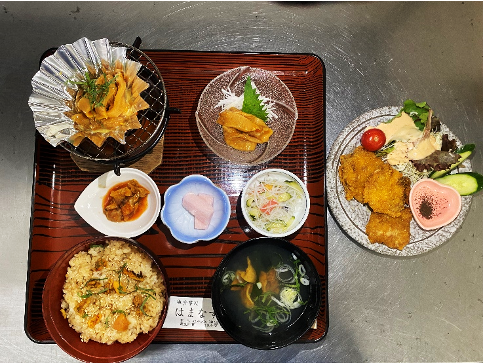
▲ ホヤづくし
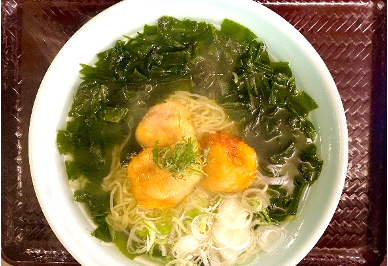
▲ ホヤラーメン
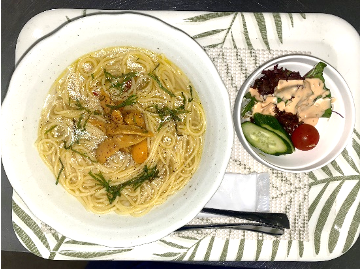
▲ ホヤパスタ
~海の幸が満載! 天然ホヤと言ったらはまなす亭~
三陸沖で取れた「天然ホヤ」を使ったメニューが豊富。中でもホヤ尽くしメニューは焼く・揚げる、炊く、刺身、吸い物などバラエティに富んだ調理法でホヤを堪能できる。ホヤラーメンやいちご煮ラーメン、ホヤパスタも人気。また、県内一水揚げ量が多いウニ。特産品生うに丼は絶品!(※うには毎年4月下旬から8月上旬までの期間限定)
漁の関係上、獲れない時もあるので確実に食べたいときは電話確認を。
はまなす亭本店
〒028-7914
岩手県九戸郡洋野町種市22-131-3
TEL|0194-65-2981
営業時間|11:00~15:00(L.O14:45)

徒歩 15分
洋野町文化会館セシリアホール(大ホール)
洋と野に舞う
三陸未来芸能彩
13:00~15:45(受付開始12:00 開場12:30)
三陸未来芸能彩
若いパワー炸裂!ここでしか観られない若者たちの共演を目撃せよ‼︎
世界でも類を見ないほどの郷土芸能の宝庫、東北・三陸地域。三陸の未来を担う若い芸能者にフォーカスした、これまでになかった芸能イベントを開催します。
今回出演する芸能団体は、洋野町内からは、三陸国際芸術祭初出演のおおの鳴雷太鼓、多彩なバリエーションが魅力の“ナニャドヤラ”を盛り上げている中野ふじの会、地元小中学校で活発に伝承されている角浜駒踊り保存会の3団体です。
また、高校生芸能として出演する北上翔南高等学校鬼剣舞部 鬼剣舞 と岩泉高等学校郷土芸能同好会 中野七頭舞 は、ともに2022年8月東京都で開催された「第46回全国高等学校総合文化祭東京大会郷土芸能部門」に岩手県代表として出場、ともに優良賞を受賞しました。洋野の多彩な芸能と、岩手県高校生トップレベルの芸能をご堪能いただける貴重な機会をお見逃しなく!
三陸国際芸術祭ならではの若さ弾ける「三陸未来芸能彩」をお楽しみください。
※観覧は無料ですが、事前予約が必要です。
洋野町文化会館セシリアホール(大ホール)
〒028-7913
岩手県九戸郡洋野町種市第24地割124−3
TEL|0194-65-5411

徒歩 15分
種市駅

JR八戸線 八戸方面
17:44発
18:44着
所要時間60分
八戸駅

東北新幹線はやぶさ46号
19:06発
22:04着
または
20:12発
23:04着
所要時間2時間58分
東京駅
地域
出演団体:プロフィール
-
中野ふじの会
岩手、青森、秋田にまたがる旧南部領内に伝わる「ナニャドヤラ」は日本最古の盆踊りといわれ、集落ごとにある特徴と多彩なバリエーションは数百種類にも及ぶとされています。
中野ふじの会は、洋野町中野地区でも古くから親しまれてきたナニャドヤラで、ふるさとの今を盛り上げ次世代につなぐ保存活動を目的として平成26年に結成しました。PR活動・交流分野など幅広く展開しながら郷土の魅力アップに取り組んでいます。 -
おおの鳴雷太鼓
おおの鳴雷太鼓は、平成12年に創作太鼓講座を受講した青年たちにより結成されました。現在では5歳から46歳まで計28人の幅広い年齢層で活動しています。
おおの鳴雷太鼓という名前は、洋野町大野(旧大野村)の鎮守である鳴雷神社(なるいかづちじんじゃ)にちなんで付けられました。五穀豊穣と家内安全を祈る太鼓として、旧大野村を代表する太鼓に成長し、村民に愛されるようにという願いが込められています。
秋田県の劇団「わらび座」による作曲と演奏指導を受け、団体名のとおり曲は雷をイメージし、勇壮な中にも若者らしい情熱と清々しさを秘めた太鼓として創作されています。 -
角浜駒踊り保存会
戦国時代、南部八戸藩は青森県南から岩手県北地方を治めていました。駒踊りは、当時の戦いの出陣の様子や戦場での騎馬戦の様子などを舞踊化したものと伝えられています。また、軍馬や農耕馬として常に人々の支えであった馬の安全とともに、戦地に果てた馬や先祖の霊を慰めるために踊ったとも伝えられています。
昭和53年からは、郷土芸能の伝承と子供たちの体力づくりや健全育成のため、地元小中学校の運動会や文化祭等で取り入れられ、現在は保存会とともに、小中学校の児童・生徒たちも伝承しています。
駒を着用して演ずる7種類の踊りと、棒や太刀、長刀などを用いて演ずる棒舞7種類の計14種類があります。 -
岩手県立岩泉高等学校郷土芸能同好会
郷土芸能同好会は、平成2年に発足し、以来全国大会9回、国立劇場3回、パリ公演と数々の実績を重ね現在に至っています。多くのメンバーはクラブに所属しながら、それとは別に中野七頭舞の伝承を志す有志の集まりです。クラブ活動の最盛期には両立が大変ですが、故郷に伝わる魅力ある舞を多くの方々に広め、後輩へ継承することは大切な役割であると感じています。
中野七頭舞は「天保の七年飢渇」が起きた頃に宮古市に伝わる黒森神楽の「シットギジシ舞」を基本として創作されたと伝えられており、踊り手は七つの役割に分かれ、舞も七種類あることから七頭舞の由来となっています。原野を開墾し、作物を植え、害獣から守り、収穫を分かち合う農民の日々の営みをとおして五穀豊穣を願いながら演じます。 -
岩手県立北上翔南高等学校鬼剣舞部
鬼剣舞は、北上地方の農民に伝承する民俗芸能で、今から約1300年前から始まるとされています。念仏によって人々を救い、ヘンバイという足踏みによって大地の悪霊を退散させ、天下泰平、五穀豊穣の祈りが込められています。北上翔南高校鬼剣舞部は、国指定重要無形民俗文化財「岩崎鬼剣舞」から指導を受け活動し、全国高等学校総合文化祭において、文部科学大臣賞1回、文化庁長官賞を3回受賞しています。老人保健施設の慰問や各種イベントでも公演を行います。
お問い合わせ
三陸芸能彩LINK 事務局
特定非営利活動法人いわてアートサポートセンター
担当:菊 池
〒020-0874
岩手県盛岡市南大通一丁目15-7
盛岡南大通ビル3階
TEL:019-656-8145
FAX:019-656-8146
MAIL:k-kikuchi@iwate-arts.jp
令和4年度日本博主催・共催型プロジェクト 三陸国際芸術祭2022 彩

主催|三陸国際芸術推進委員会 独立行政法人日本芸術文化振興会 文化庁
共催|八戸市、階上町、洋野町、久慈市、野田村、普代村、田野畑村、岩泉町、宮古市、山田町、大槌町、釜石市、大船渡市、陸前高田市、住田町、三陸鉄道株式会社、公益社団法人全日本郷土芸能協会、特定非営利活動法人いわてアートサポートセンター、特定非営利活動法人ジャパン・コンテンポラリーダンス・ネットワーク
協力|特定非営利活動法人震災リゲイン、合同会社imajimu、東北文化財映像研究所、みんなのしるし合同会社